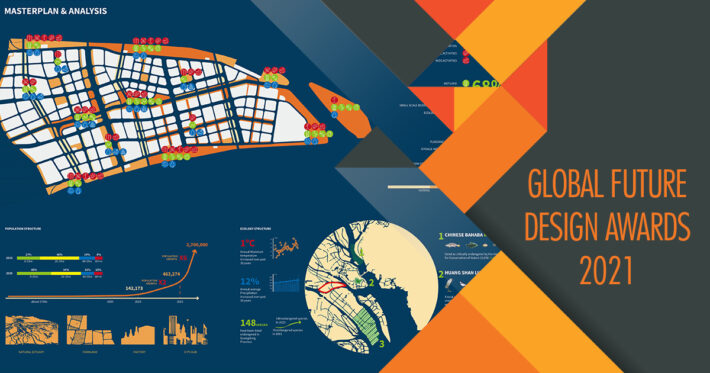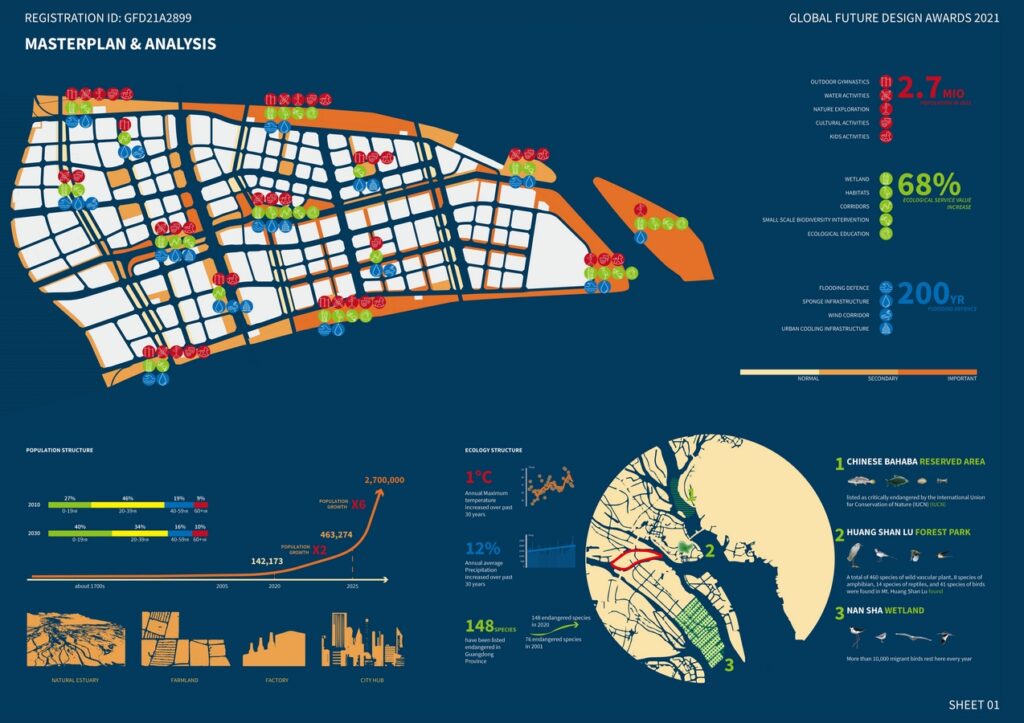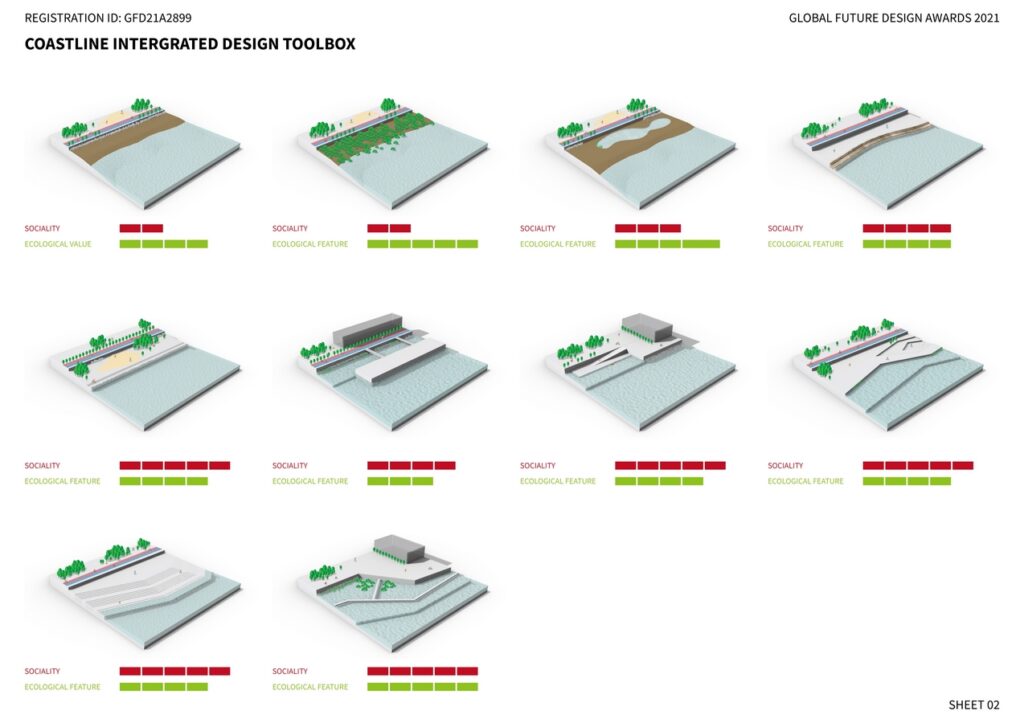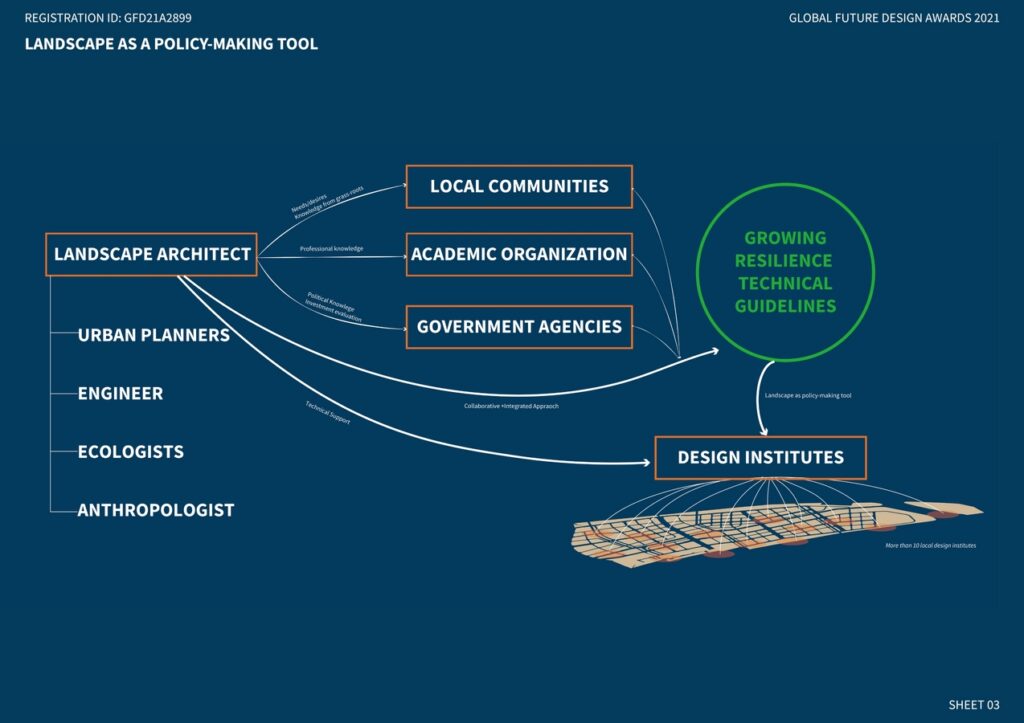The traditional infrastructure design meeting desired probability often has limited flexibility coping with changes. Nansha will become the hub of Guangdong-Hong Kong-Macao Greater Bay Area and home for millions of dwells. Rapid urban sprawl and limited ecological spaces made GBA vulnerable as a harbinger of climate changes impact. The project team explores a way to re-balance people and nature by encouraging their interactions and forming their own networks.
Global Future Design Awards 2022: Discounted Entries Open Now! Save $50
Super Early Discount – 20th October 2021 to 30th December 2021 – $199 = $149
🏆 Winner
Global Future Design Awards 2021
Growing Resilience: a comprehensive design framework for decision-making
Urban Design Concept
Firm
Arup International Consultants (Shanghai) Co. Limited
Architect/Designer
Arup International Consultants (Shanghai) Co. Limited
Design Team
Huizhen Wen, Lily Yu, Yaming Xiao, Jia He, Qi Cheng, Zhixin Chen, Chen Li, Yixuan Chen, Leeyuan Ko, Jack Lim, Jie Yang, Nan Zhou
Guangzhou, Guangdong, China
Country
China
Photographer/Copyright
©Arup
Landscape is not only framework, but policy-making tools
A collaborative team of landscape architects, urban planners, ecologists and engineers, local communities, authorities and academics developed a set of decentralized, distributed and integrated solutions that buffer cities and leave room for nature growth. The team should make a constructable planning in near future, which involves not only predicting how ecological, physical or social system are likely to respond to interventions, but also how to reach consensus among all stakeholders.
However, landscape designer cannot build resilience in isolation. In this project, landscape architects extend their designing role to further engage with permitting authorities from the inception phases to build confidence and support, and finally published a growing resilience technical guideline that acts as a regulatory tool for local design institutes. This demonstrates that landscape architect can play a crucial role, bridging nature and culture, fostering more integrated approaches to nature conservation and stimulating the active participation of local communities.
Ecological and engineering evidence based sustainable design
Ecological methods were key in creating such a living, biophysical and self-growing system. The design team worked closely with habitat scientists who helped the design team to identify areas where these habitat types could be developed, creating opportunities to restore plant and bryophyte species on site. Taking social demands into account, the public open space has been categorized into three groups from most to least importance.
For coastal area, a hydrodynamic model has been developed to evaluate the flooding safety under different climate changes scenarios, and to further formulate synthetic landscape strategies based-on nature. Instead of a concrete wall from existing plan, existing mangroves will be restored, native salt-marsh wetland will slow erosion while provide a healthy aquatic system dealing with sea-rise. The coastal ecotone serves as a dynamic protection zone under changing climate and home to endangered species and diverse flora and fauna. It will reduce both the cost and visual impact necessary to protect the valuable habits. The civil engineering measures for balanced earthwork has been embedded into new coastal landform creating a set of multifunctional spaces. They are not only for recreational purposes, but also resilience and biodiversity.
For other inland parks, besides its significant impact on economic life of urban centers, it also brings many important environmental benefits. A series analysis of heat island effect, inundation risk and biodiversity has been conducted, and defined the core environmental issue. Vegetation design will create a comfortable living environment with air cooling and absorption of atmospheric pollutants. Parks also get people close to nature, promote mental health and live with wild creatures.
Registrations open… Don’t miss the opportunity to win with your visionary projects.






